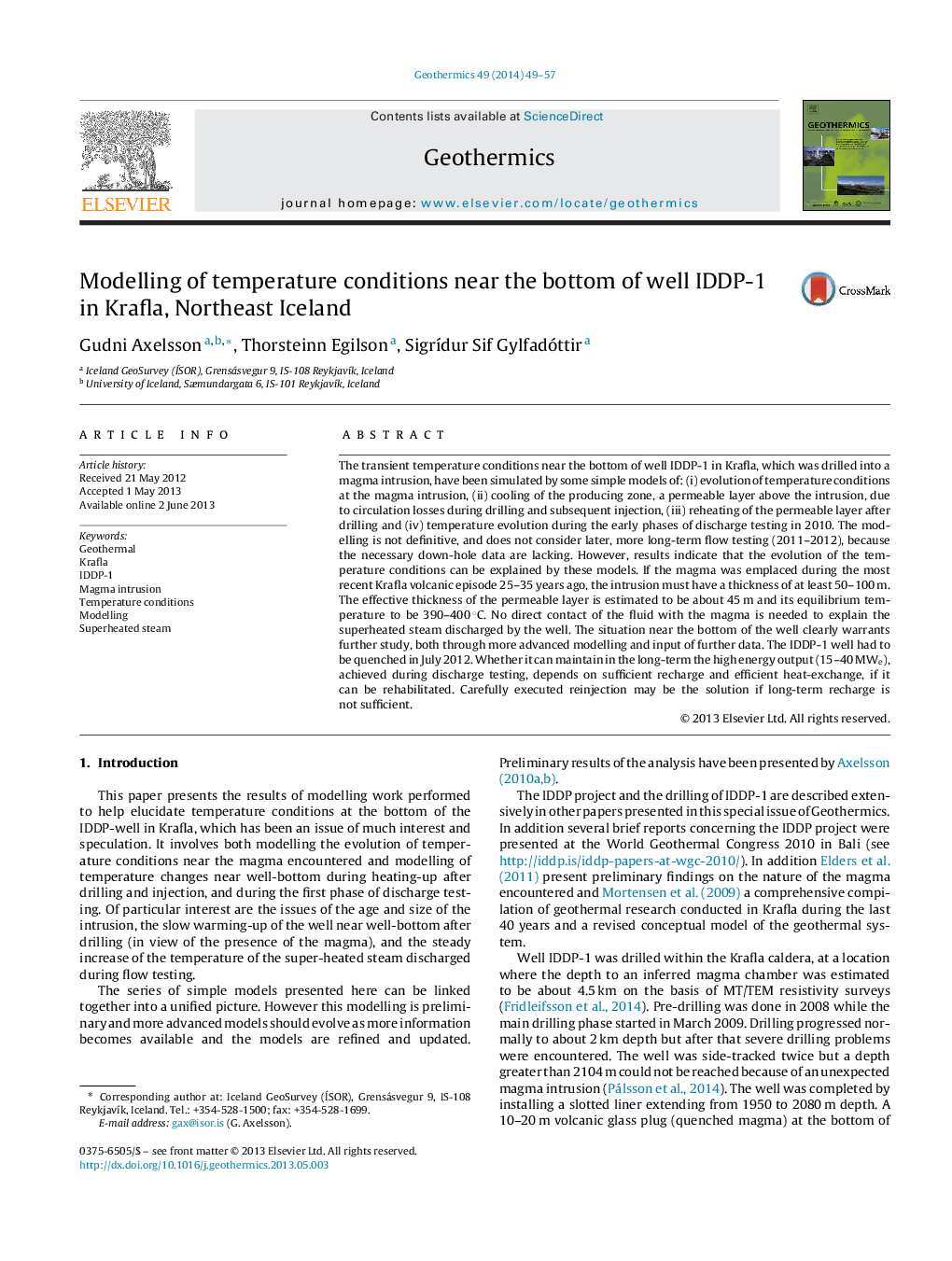| کد مقاله | کد نشریه | سال انتشار | مقاله انگلیسی | نسخه تمام متن |
|---|---|---|---|---|
| 1742444 | 1521919 | 2014 | 9 صفحه PDF | دانلود رایگان |

• Temperature transients near magma hit by IDDP-1 are simulated by simple models.
• Includes magma temperature, cooling during drilling, reheating and discharge output.
• If magma was intruded 30 years ago its thickness is at least 50–100 m.
• Thickness of permeable layer above magma and its temperature are well constrained.
• Energy output can only be sustained if recharge and heat-exchange is sufficient.
The transient temperature conditions near the bottom of well IDDP-1 in Krafla, which was drilled into a magma intrusion, have been simulated by some simple models of: (i) evolution of temperature conditions at the magma intrusion, (ii) cooling of the producing zone, a permeable layer above the intrusion, due to circulation losses during drilling and subsequent injection, (iii) reheating of the permeable layer after drilling and (iv) temperature evolution during the early phases of discharge testing in 2010. The modelling is not definitive, and does not consider later, more long-term flow testing (2011–2012), because the necessary down-hole data are lacking. However, results indicate that the evolution of the temperature conditions can be explained by these models. If the magma was emplaced during the most recent Krafla volcanic episode 25–35 years ago, the intrusion must have a thickness of at least 50–100 m. The effective thickness of the permeable layer is estimated to be about 45 m and its equilibrium temperature to be 390–400 °C. No direct contact of the fluid with the magma is needed to explain the superheated steam discharged by the well. The situation near the bottom of the well clearly warrants further study, both through more advanced modelling and input of further data. The IDDP-1 well had to be quenched in July 2012. Whether it can maintain in the long-term the high energy output (15–40 MWe), achieved during discharge testing, depends on sufficient recharge and efficient heat-exchange, if it can be rehabilitated. Carefully executed reinjection may be the solution if long-term recharge is not sufficient.
Journal: Geothermics - Volume 49, January 2014, Pages 49–57